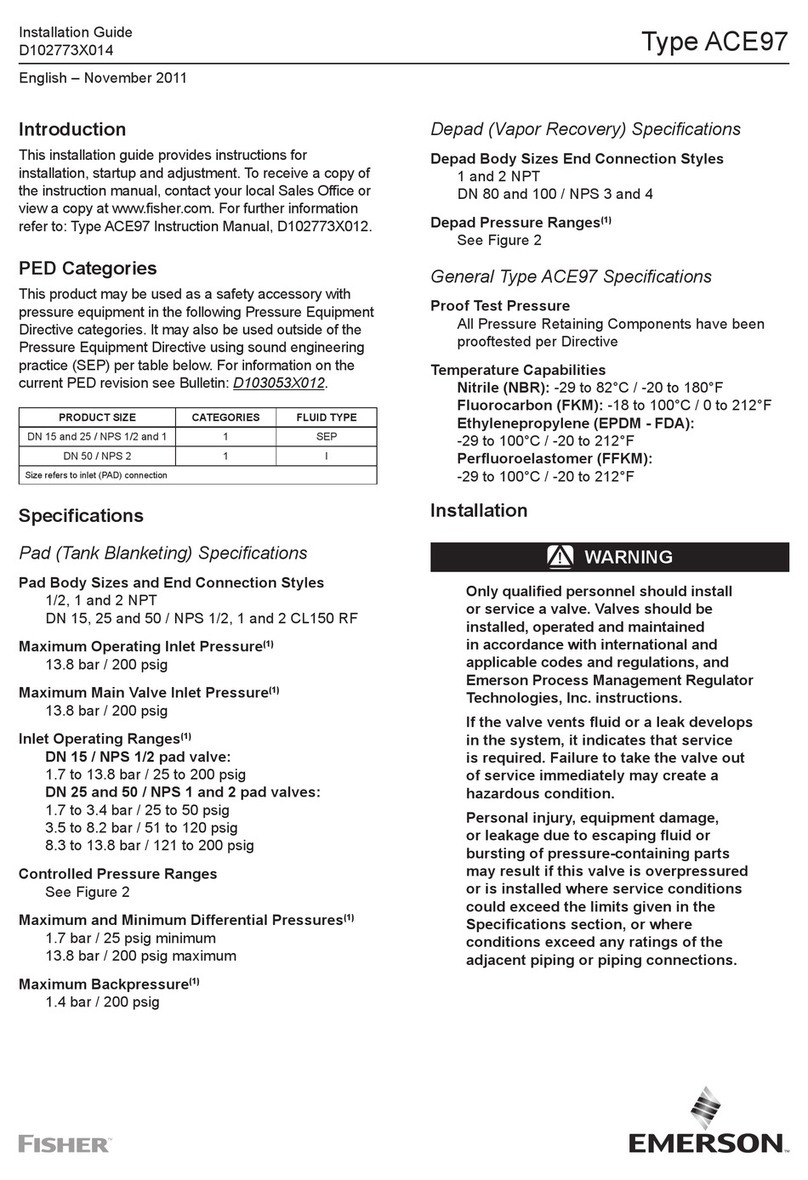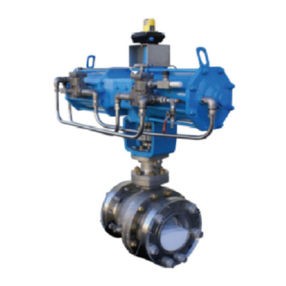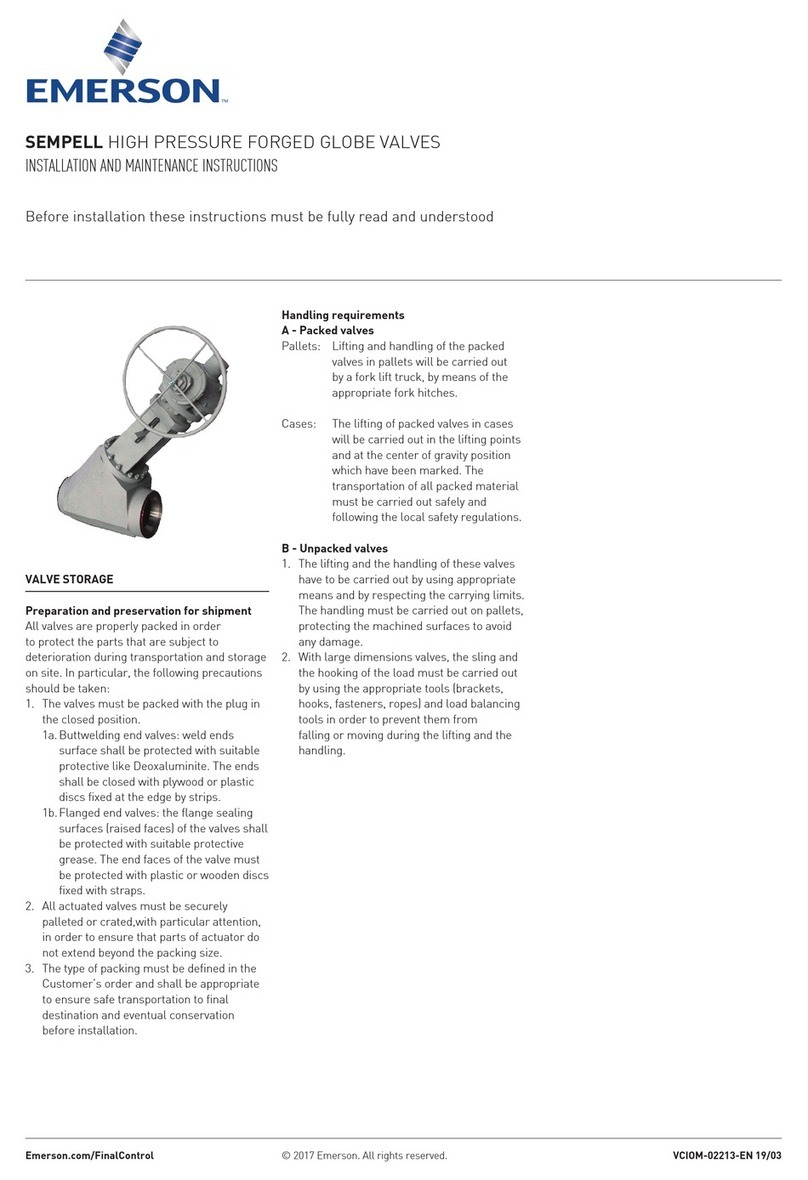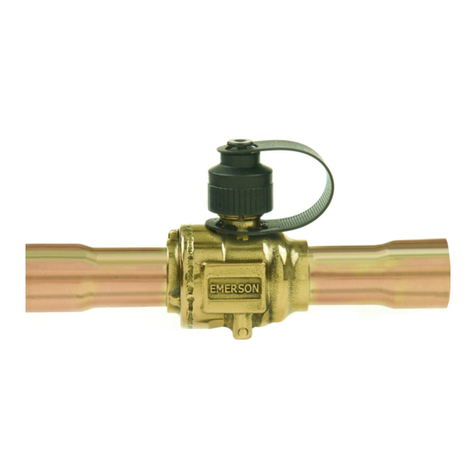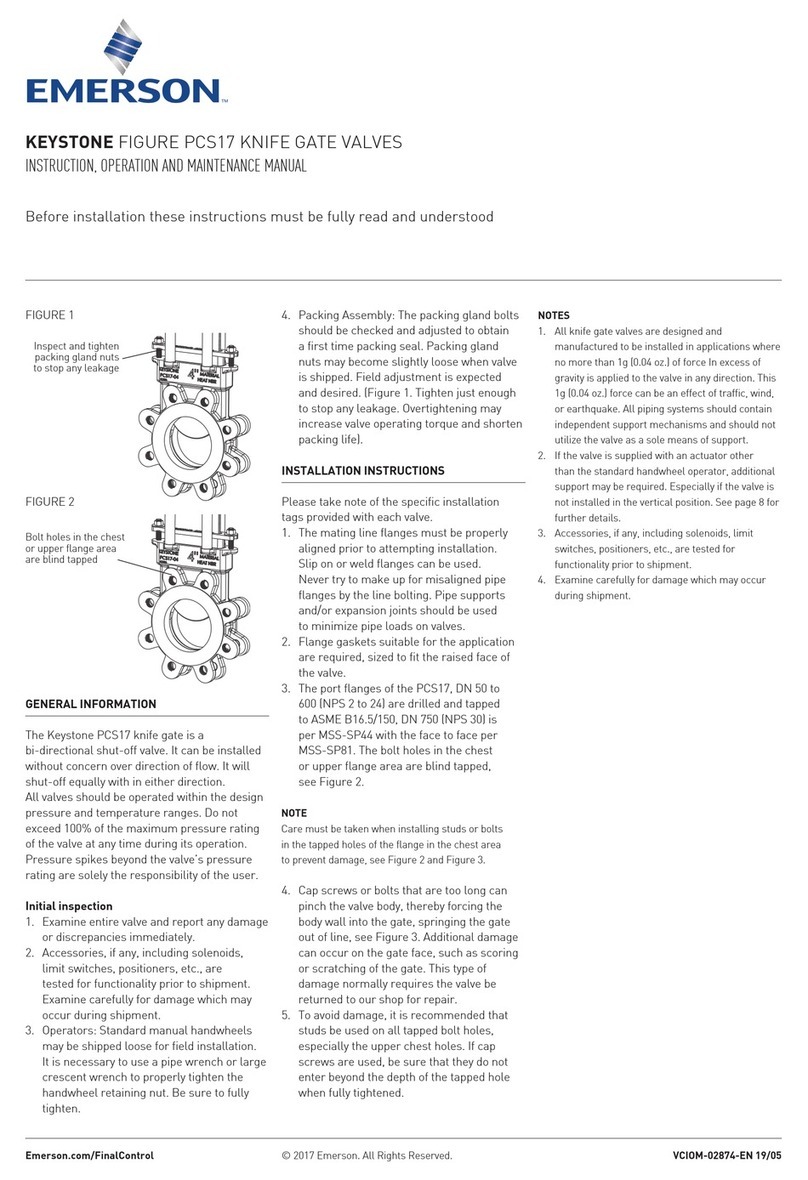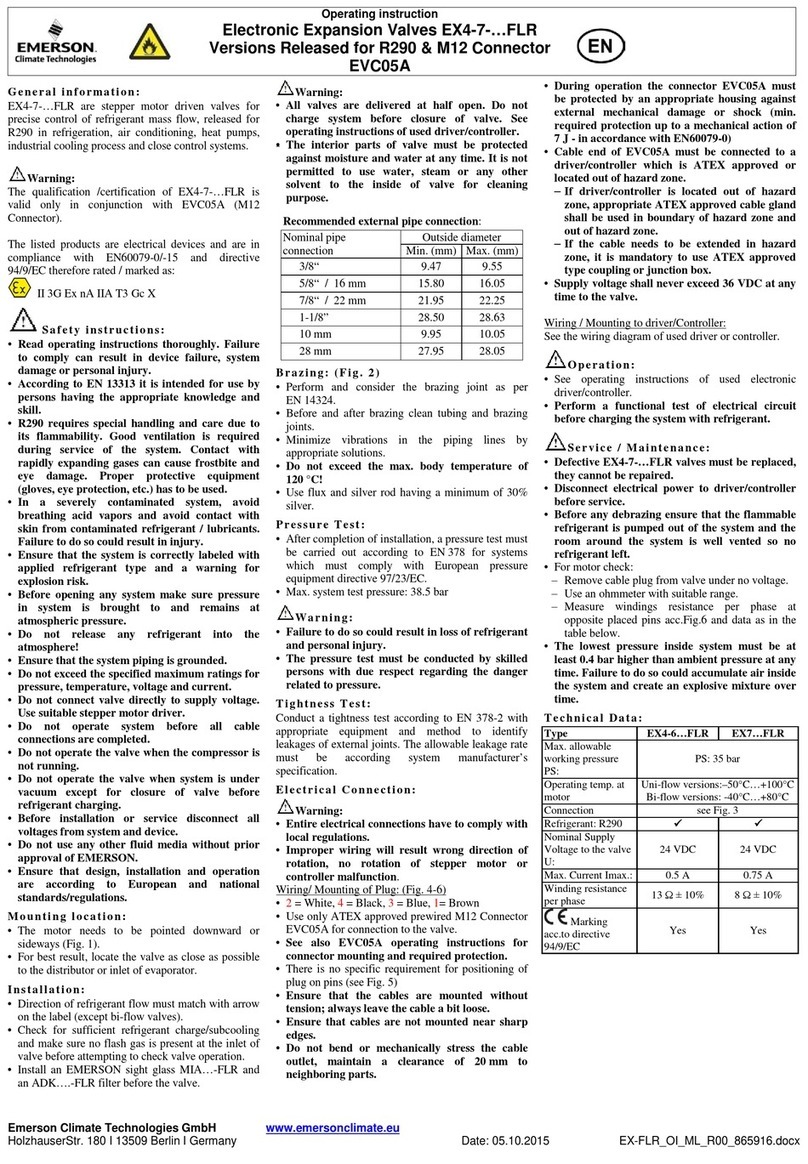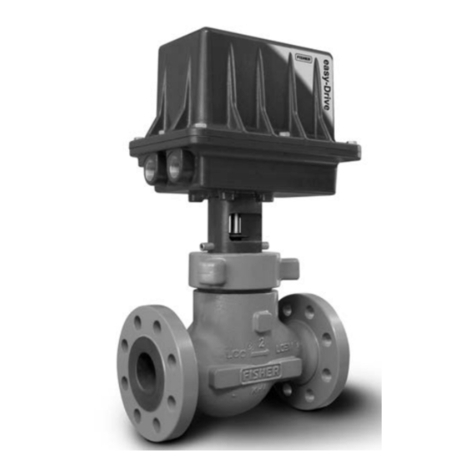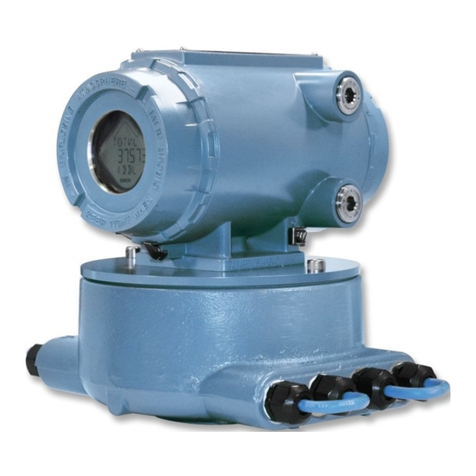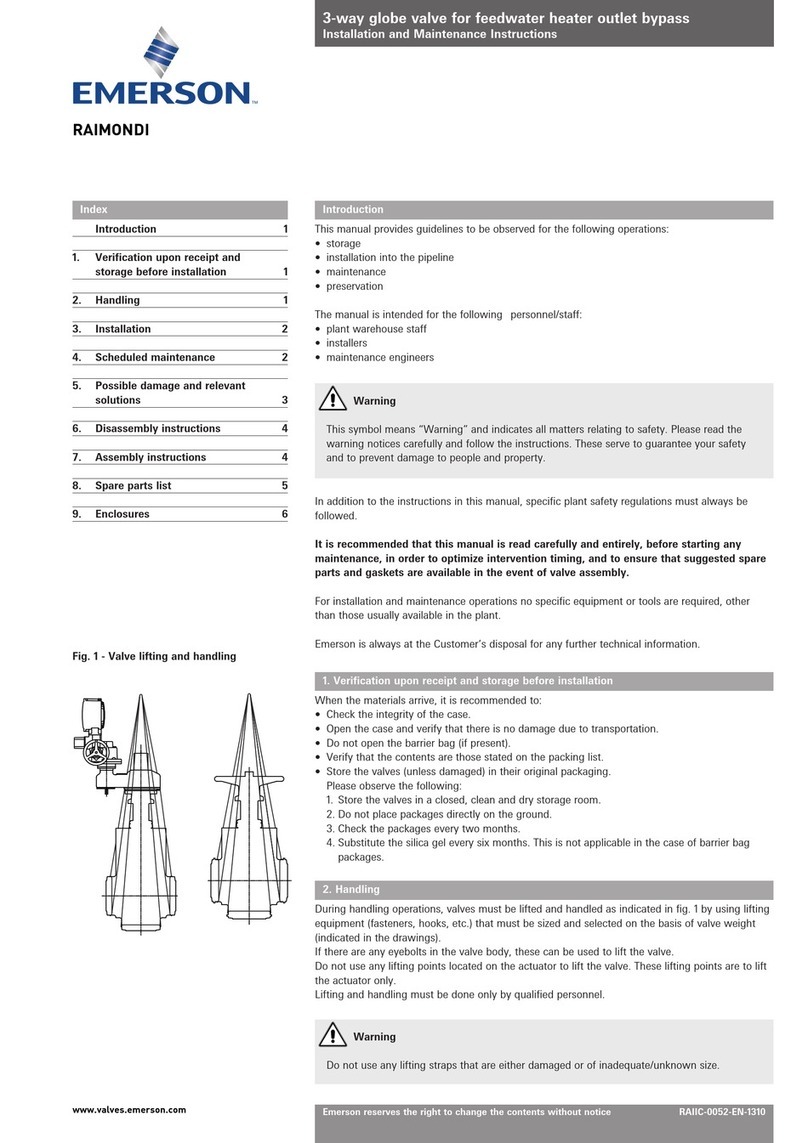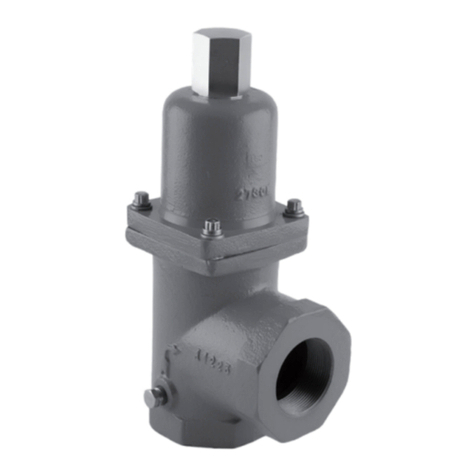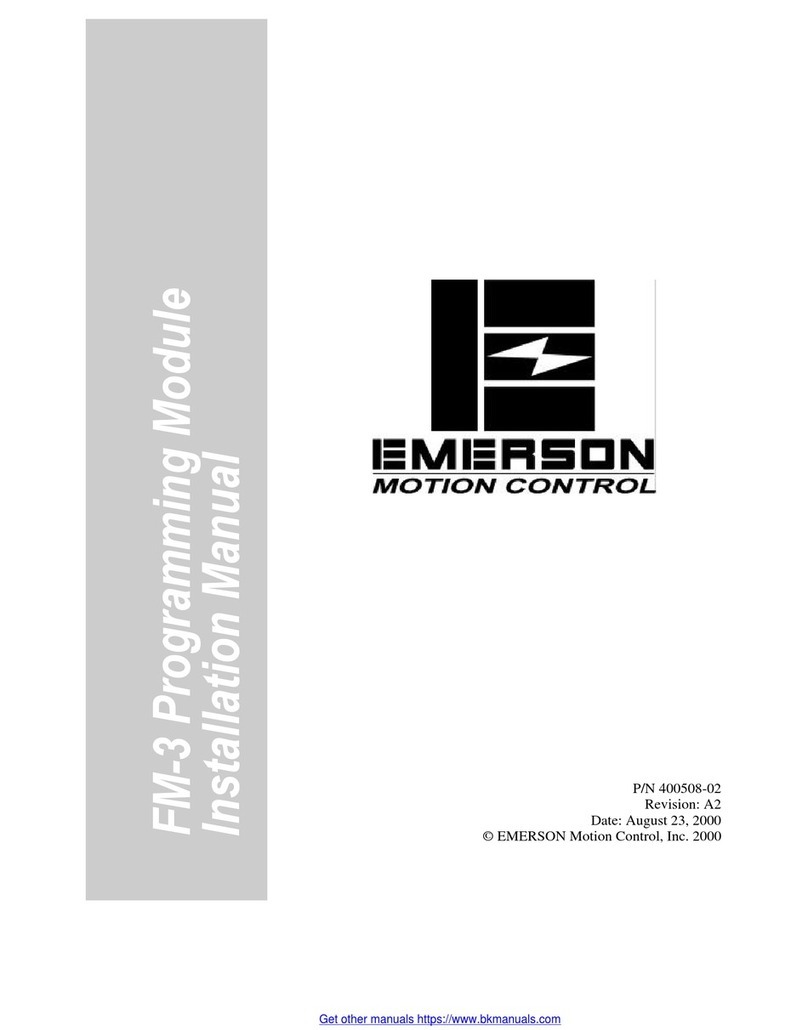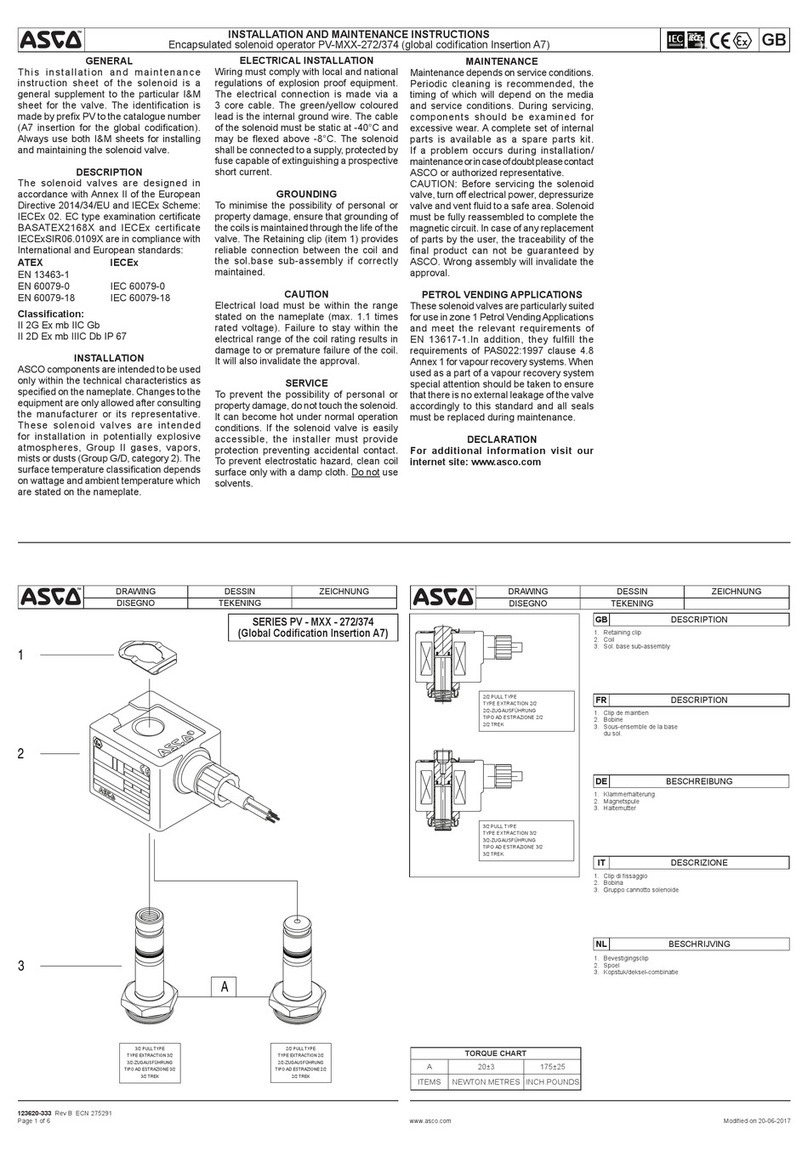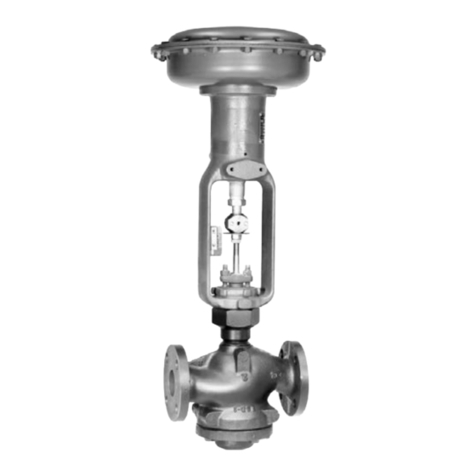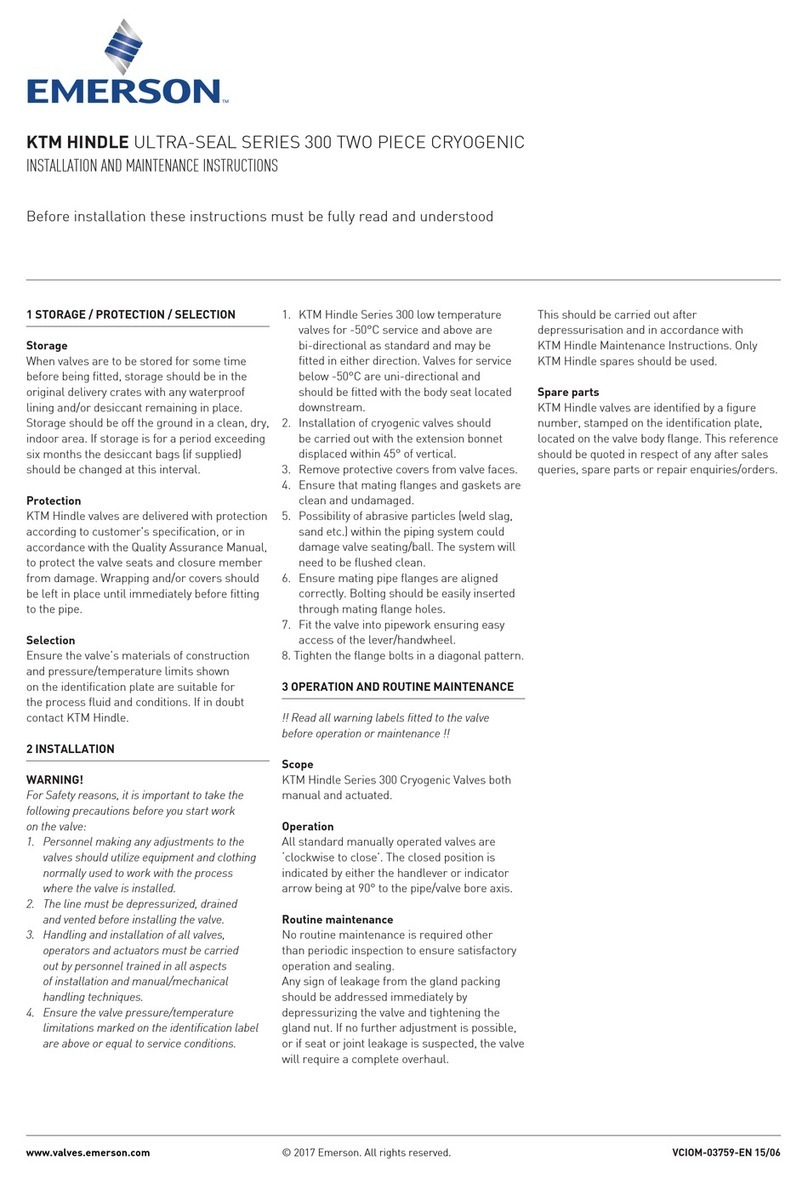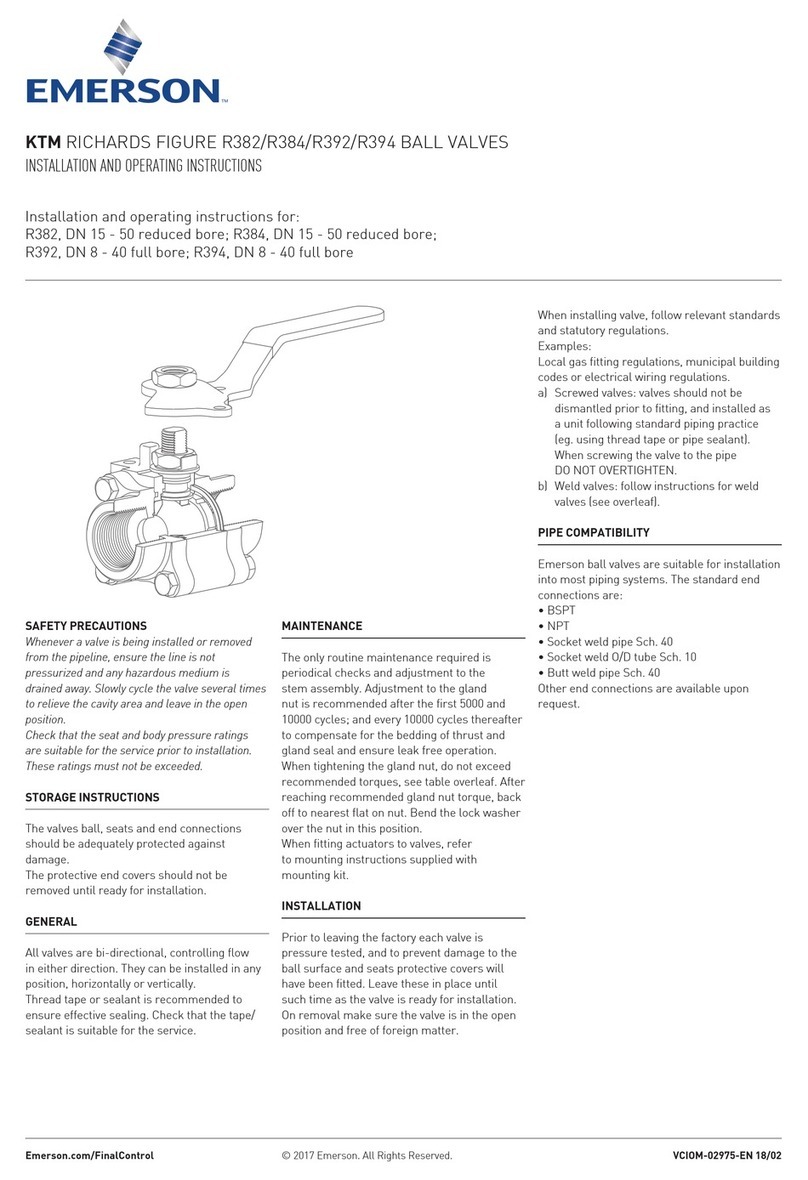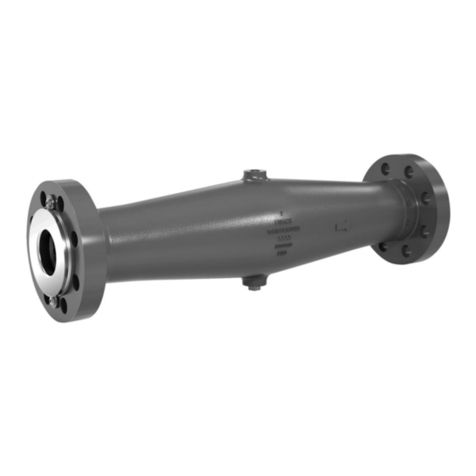
7
CROSBY STYLE HSL SAFETY VALVES
INSTALLATION, MAINTENANCE AND ADJUSTMENT INSTRUCTIONS
Adjusting the nozzle and guide rings
The HSL pressure relief valve is supplied
with two adjusting rings to allow adjustments
affecting the opening and re-closing properties
of the valve. The nozzle ring (4) and guide
ring
((8) for F thru J orifices and (11) for K thru Q
orifices) adjustments are made at the factory
but resetting in service sometimes is necessary.
Should it be necessary to adjust the rings in
order to change blowdown or reduce valve
simmer, the following steps should be taken:
CAUTION
Should any ring adjustments be made while the
valve is installed on a pressurized vessel, the
valve should be gagged. Care must be exercised
to prevent excessive tightening of the gag that
could damage the valve spindle and valve seats.
However, sufficient force must be applied to the
gag to prevent the valve from lifting.
Whenever either the nozzle ring or the guide ring
is adjusted, a record should be kept of the number
of notches and the direction the ring was moved.
This will make it possible to return to the original
setting in case of an error.
IMPORTANT
Crosby Style HSL valves have the factory ring
settings stamped on the machined surface on
the bonnet, directly under the cap.
Guide ring adjustment
T
he guide ring is the principal blowdown control
ring in the valve. To change the guide ring
position, remove the guide ring set screw (9/12)
and insert a screwdriver to engage one of the
notches. Turning the guide ring to the right
raises it and decreases the blowdown. Turning
the guide ring to the left lowers the ring, thereby
increasing the blowdown. Theguide ring should
never be moved more than ten notches either
way without resetting the valve. After each
adjustment always replace, tighten and seal wire
the guide ring pin, being careful that its point fits
in the notch in the ring, without making contact
with the ring or bearing on top of a tooth.
Nozzle ring adjustment
The nozzle ring adjustment is determined
carefully by factory testing and resetting in
service seldom is necessary. Should it be
necessary, the nozzle ring is adjusted by
removing the nozzle ring set screw (5) and
inserting a screwdriver to engage the ring
notches. Turning the ring to the right raises
and results in a strong 'pop' action that will
increase blowdown. Moving the ring to the
left lowers the ring, decreasing the blowdown
and may result in excessive warn or simmer if
lowered too far.
The range of adjustment of this ring is limited
and it should not be moved more than one
notch at a time from its set position. The valve
performance should be checked after each
adjustment. After each adjustment always
replace, tighten and seal wire the guide ring
pin, being careful that its point fits in the notch
in the ring, without making contact with the ring
or bearing on top of a tooth.
NOTE
It is very important not to allow the valve to pop prior
to reinstalling the nozzle ring set screw.
Marking the new ring settings
If different ring settings are obtained after
testing, re-stamp the valve bonnet with the
new (tested) ring settings.
11 VALVE MAINTENANCE
The functioning and service life of a safety valve
depends primarily upon methods used in its
maintenance. For this reason, the following
maintenance procedures are recommended.
When possible, remove the valve from the
system before dismantling. There should be no
system pressure when a valve is dismantled in
place or removed for shop repair.
Disassembly of cap and lifting lever gear
For parts identification, see Figures 1 and 2.
The cap and lifting lever gear consists of the cap
(17/20), spindle nut (21/25) and spindle nut cotter
pin (22/27), fork assembly [forked lever (20/23),
forked lever pin (24/27) and cotter pin (23/26)]
and the lever assembly [lever (19/22), lever pin
(29/32) and cotter pin (23/26)]. The cap cannot
be removed from the safety valve without first
removing the fork assembly which is seal wired
to prevent tampering with the adjusting bolt.
To disassemble the cap and lifting lever gear,
proceed as follows:
A.
Remove the fork pin cotter pin (23/26), forked
lever pin (24/27) and forked lever (20/23).
B. Loosen the two cap screws (18/30) and
remove the cap (17/25) and lever assembly.
C. Remove the spindle nut cotter pin (22/27)
and unscrew the spindle nut (21/25) off the
spindle (14/17).
To complete disassembly of the valve proceed
as follows:
A. Remove the nozzle ring set screw. Check
the nozzle ring setting by turning the nozzle
ring to the right and counting the number of
notches turned until it makes contact with
the disc. Record the number of notches.
This location is given as minus (-) notches
from this contact position.
Remove the guide ring set screw. Check
the guide ring setting by returning the guide
ring to its level position. The guide ring is in
level position when the bottom face of the
guide ring is level with bottom face of the
disc. The guide ring position is recorded as
minus (-)(down) or plus (+) (up) notches from
this level position.
B. Before releasing the spring load, measure
and make note of the height of the adjusting
bolt over the top of the bonnet. This
information will help when reassembling
the valve to its approximate original setting.
C. Loosen the adjusting bolt nut. Count the
number of turns required to remove the
spring load by rotating the adjusting bolt in
a counterclockwise direction.
D. Loosen and remove bonnet stud nuts.
E. Lift the bonnet straight up carefully to clear
the spindle and valve spring. Exercise care
when lifting the bonnet as the spring and
spindle will then be free to fall aside.
F. Lift the spring and spring washers off the
spindle. The spring and spring washers are
fitted together and must be kept together
as a subassembly. Spring washers are not
interchangeable between ends of the spring.
G. The disc holder assembly or disc and
spindle can now be removed from the valve
body by lifting the spindle.
